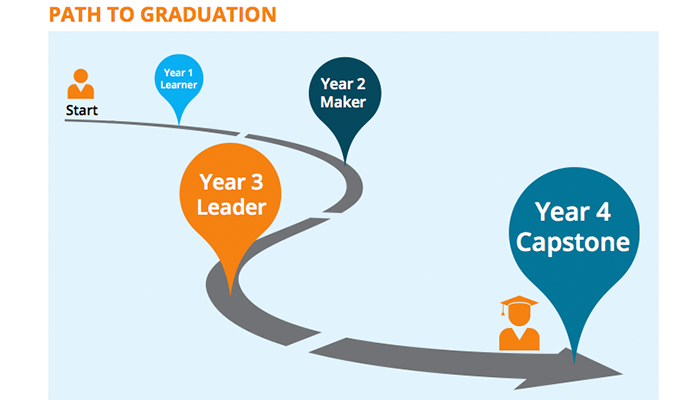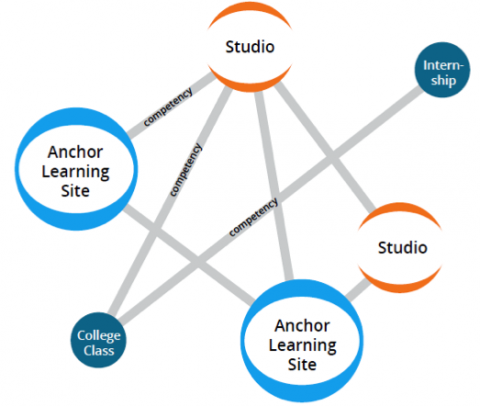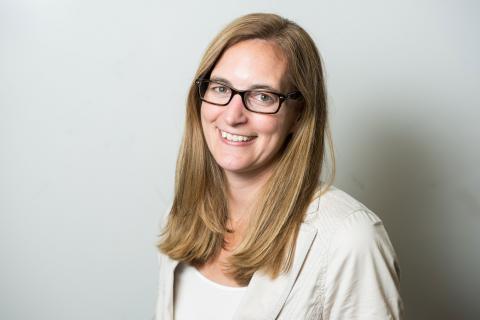Operating a Next Gen School: New Organizational Models for K-12 Schools
Topics

We’ve all had the experience of truly purposeful, authentic learning and know how valuable it is. Educators are taking the best of what we know about learning, student support, effective instruction, and interpersonal skill-building to completely reimagine schools so that students experience that kind of purposeful learning all day, every day.
If you could start from scratch, without any of the constructs of a traditional K-12 school, how would you operate a school?
How do you operate a school? If you’re trying to improve student outcomes by changing up teaching and learning through blended, competency-based, and personalized learning, the typical operational trappings of what makes a school a school—a principal, one teacher for X number of students for X number of subjects, classrooms of similar size with desks or tables and chairs, some computers, books, paper and pens, an Internet connection, etc.—may not make sense.
If you could start from scratch, without any of those traditional constructs of a school, how would you operate a school?
In the grantee profiles of NGLC schools, we share the organizational innovations behind their school models. The profiles describe how these next gen learning schools are structured, how staff are organized, partnerships they’ve nurtured, and other aspects of their organizational models that differ from traditional school operations. Here are a few examples.
Vertus Charter School, in Rochester, New York, serves boys in grades 9 to 12.
“The reconceived roles are more doable by a deeper talent pool of talented and highly motivated ‘ordinary’ professionals than relying on highly-effective ‘superhero’ teachers.”
- Teachers are responsible for instruction and academic learning. Preceptors serve as educators, guides, role models, and mentors for a team of 12-14 boys who they stay with throughout the school day; they lead a daily character education seminar.
- The school operates on a year-round schedule.
- The school workforce is restructured with full-day, full-year employees.
- Vertus provides an internal pipeline and training program so that preceptors at current Vertus schools can then lead additional new schools as the charter network grows.
Building 21 opened its first high school this year as a school development partner with the School District of Philadelphia. It will open a second school in Allentown, Pennsylvania this coming fall.
- “School” is reconceptualized as a network. An individual student is at the center with multiple connections to learning “nodes” that take many forms and are provided by various sources. A competency framework provides the link between the nodes of the network to provide a cohesive experience for students.
- The school is organized into studios, workshops, and advisories.

- Industry and college experts work alongside teachers on studio learning experiences. With this new structure, content becomes interdisciplinary and highly integrated and roles, time, and tasks become more fluid.
- B21 anticipates the network approach will enable nimble, flexible enrollment growth by adding learning nodes rather than complete new schools.
Blackstone Valley Prep Mayoral Academy added a high school to its network of charter schools in Rhode Island.
“Serving an intentionally diverse population from two urban and two suburban Rhode Island communities, the charter organization launched BVP High as a proof-point of two interdependent principles: 1. Deep personalization through blended learning can meet any scholar’s needs, regardless of race, class, or current ability; 2. This success can therefore be implemented by any school, public or private, anywhere.”
- BVP High has purposely created an organizational model with resource allocations that mirror those of traditional-model schools.
- The school uses a station-rotation blended learning model in classrooms with traditional teacher-to-student ratios to increase personalization and create daily opportunities for teachers to provide small group instruction at ratios as low as 1:5, 1:3, or even 1:1.
- BVP has worked with a university partner since its earliest days of planning. The goal of the partnership with Brown University is to create a scalability and sustainability framework that can be used locally and nationally.
Florida Virtual School is opening its first FLVS Campus for high school students in Orlando this fall, combining virtual learning with a community-based learning center.
“The overarching vision for FLVS Campus is to reinvent the school-student relationship, emphasizing the student as owner of and participant in his or her learning.”
- The physical campus will be available 10 hours a day, 200 days a year. Online content is always available.
- Teachers are educational mentors who are agile and can adapt to students who, with modeling and structure, chart their own course to mastery.
- The schedule for teachers at FLVS Campus is more flexible than what you would see at a more traditional brick-and-mortar school, since teachers work on campus and remotely from home.
- As a community-based center, the school takes a reciprocal approach to community partnerships where students serve the community through outreach projects, and community organizations provide mentoring and internships for students to learn and develop critical skills.
To discover the organizational models of all NGLC schools, access their grantee profiles from the Breakthrough Model Designs page. You’ll also get a sense of the schools’ visions, academic models, tech tools, and budget from these brief 2-pagers. For additional resources related to organizational models and operations, visit the Business Models Topics page.




